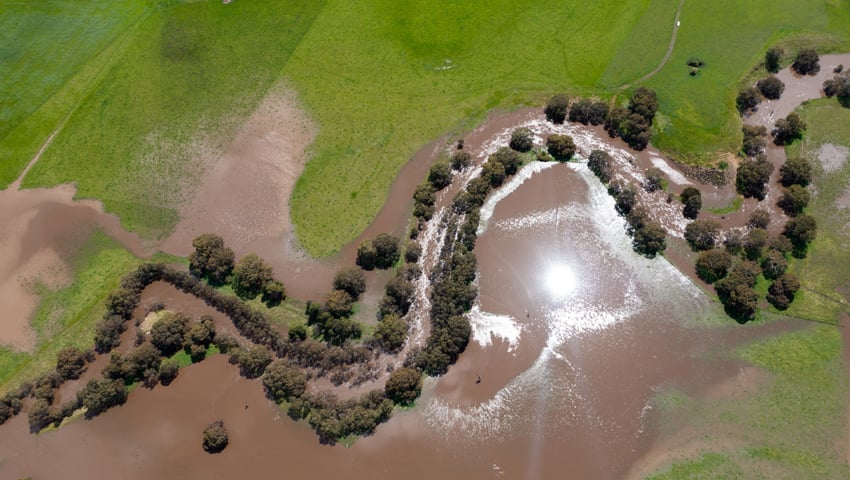The government says it is bolstering England’s resilience to flooding through additional financial support to farmers and rural communities, as well as refreshing its approach to delivering funding to make sure it works for communities.
Recognising the significant impact of flooding on farmers, an additional £50 million will be distributed to internal drainage boards (IDBs), the public bodies responsible for managing water levels for agricultural and environmental needs in a particular area.
This transformational investment will put IDBs on a firm footing to deliver their vital role in flood and water management for years to come. IDBs that submit successful bids will be able to spend the £50 million on projects over the next two years. This will benefit projects that will improve, repair or replace IDB assets – including flood barriers, embankments and maintenance of watercourses. The funding will support projects which reduce risks and impacts from flooding to farmers and rural communities across England. The Environment Agency has begun work with IDBs to distribute the funding from today.
The government has also committed to going further to protect communities from flooding. The government inherited an outdated funding formula for allocating money to proposed flood defences. Established in 2011, the existing formula slows down the delivery of new flood schemes through a complex application process, and also neglects more innovative approaches to flood management such as nature-based approaches and sustainable drainage.
A consultation will be launched in the new year which will include a review of the existing formula to ensure that the challenges facing businesses and rural and coastal communities are adequately taken into account when delivering flood protection.
The government has also confirmed payments to farmers impacted by last year’s severe weather through the Farming Recovery Fund. A total of £60 million will be distributed to eligible farmers, via recovery payments of between £2,895 and £25,000 to around 13,000 farm businesses. Payments are expected to land in farmers’ accounts from 21 November.
Floods Minister Emma Hardy said, “Farmers are the backbone of the nation, with their hard work helping to put food on the family tables across the country. More intense weather events are destroying homes, businesses and livelihoods across the country, with farming communities facing the heaviest consequences. That is why this government is reforming how flood funds are distributed to protect businesses, rural and coastal communities as we invest over £2.4 billion in flood defences across the country.”
The government is investing £2.4 billion until March 2026 to improve flood resilience and better protect communities across the country, including from coastal erosion, with further decisions for 2026/27 and beyond made at the next Spending Review.
In September, the Secretary of State also convened the first meeting of the new Floods Resilience Taskforce. This brings together representatives from central and local government, Local Resilience Forums, emergency responders and the National Farmers Union, among others, to discuss how they will speed up and co-ordinate flooding preparation and resilience.
Country Land and Business Association (CLA) President Victoria Vyvyan said, “Farming is at the sharp end of climate change, which is adding unpredictable business risk, and further reducing confidence across the industry. It is urgent that the government develops long-term, sustainable approaches that allow the sector to adapt to climate change while reducing the risks for downstream communities. Delays to the Farming Recovery Fund have added to the difficulties and volatility that farming is already facing. We are pleased the government will make payments swiftly now that the budget has been released.”
